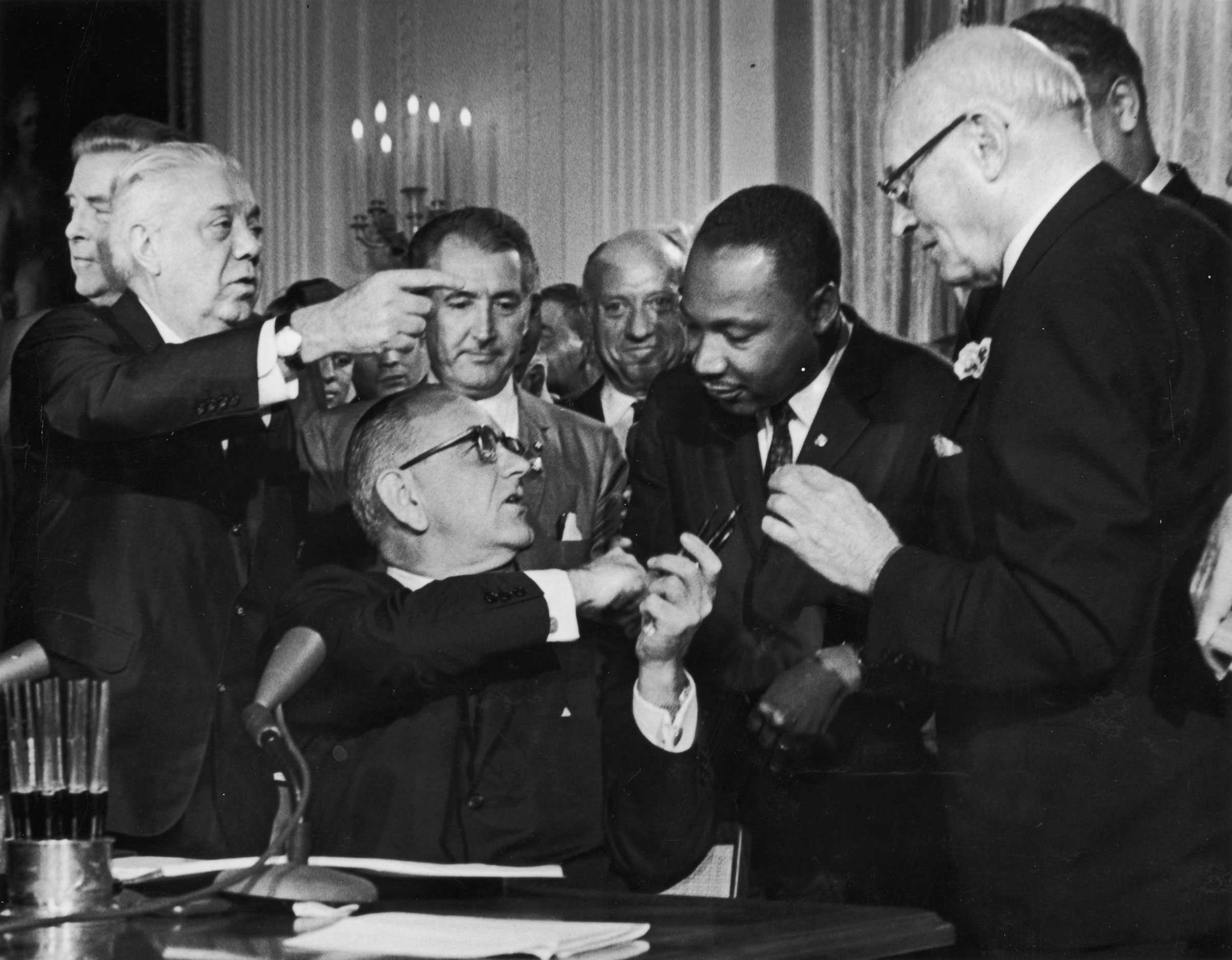
Chapter 4
Pushing for Permanent Change
African Americans, along with their allies, pushed to secure civil rights by changing America’s laws. Through large demonstrations and marches, activists brought the nation’s attention to the struggle for civil rights and full citizenship.
But some younger African Americans wanted more direct results. Frustrated by the slow, gradual change of the Civil Rights Movement, they looked to the Black Power Movement and its demands for immediate equality.
1964 Civil Rights Act
In 1963 President John F. Kennedy announced his plan for a new civil rights bill. After Kennedy’s assassination, the bill stalled, but pressure by President Lyndon B. Johnson and civil rights leaders helped force a vote.
The bill, signed into law on July 2, 1964, gave the federal government a role in desegregating schools and other public facilities. It also restricted the use of literacy tests for voter registration and created the Equal Employment Opportunity Commission to protect against race and sex discrimination in employment.

Featured Video
Martin Luther King Jr. on Face the Nation
In 1964, Dr. Martin Luther King Jr. appeared on Face the Nation to discuss the proposed civil rights bill, the protests he led in the South that summer, and plans for more protests in Alabama focusing on voting rights.
Passing the Civil Rights Act
Civil Rights Act of 1964
President Lyndon B. Johnson shakes hands with Martin Luther King Jr. after signing the Civil Rights Act.
Southern Democrats and some Republicans opposed passage of the Civil Rights Act. But President Lyndon B. Johnson used his influence to gain support from key senators, including Republican Everett Dirksen and Democrat Hubert Humphrey.
After 75 days of maneuvering, the House of Representatives also signed the bill and it was sent to President Johnson for his signature.

[The Civil Rights Act’s] purpose is to promote a more abiding commitment to freedom, a more constant pursuit of justice, and a deeper respect for human dignity.
President Lyndon B. Johnson, 1964
Featured Video
President Johnson Speaks on Signing the Act
President Lyndon B. Johnson addressed the nation before signing the Civil Rights Act. He explained the act’s historical significance and the purpose it would serve in American society.
Impact of the Civil Rights Act
Pen used by President Lyndon B. Johnson to sign the Civil Rights Act
The 1964 Civil Rights Act sought to end racial and workplace discrimination, in part by creating the Equal Employment Opportunity Commission. The Commission investigated discrimination complaints and paved the way for future voting rights and employment legislation. But while the Civil Rights Act ended legal discrimination, discriminatory practices still continued.


